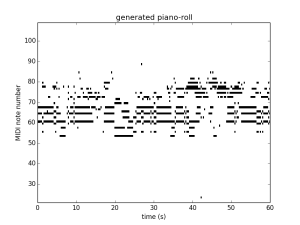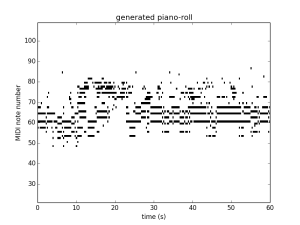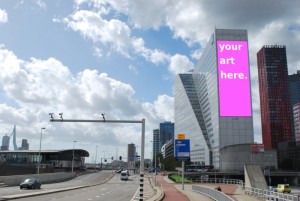This post originally published to the ADFI blog:
Online communities are perhaps for the current decade (for which we still have no adequate name) what “Web 2.0″ was for the noughties. Web 2.0 spawned terms such as “prosumer” and “produser” amidst other various contorted contractions aimed at highlighting what was genuinely revolutionary – that users were no longer passive receivers of content but could rather contribute actively to sites that they visited.
Fast forwarding to the current decade (apparently the term ‘one-ders’ was the winner in an Australian competition to name it, but I can’t quite bring myself to use it) the equivalent advance is in the area of online communities. These days every site has a ‘social’ aspect and many have inherited values from Lave and Wenger’s Communities of Practice.
We can speculate that this has happened for a variety of reasons: the enormous uptake of smartphones for internet access anywhere (over 65% of people have them in Australia), combined with the increasing ubiquity of wireless broadband and the examples provided by the huge success of Facebook and its successors are potential candidates.
The point of this post is to write about online communities for teachers. Many other professions and groups have strong, functioning online communities that serve their needs but it is my belief that online communities of teachers still have a great deal of unrealised potential. In this short blog post I try to outline what is missing; what teacher needs are not being met by what is currently available.
Strong online communities
What does a strong, functioning online community look like? A good (if unscientific) heuristic is a well-known, single location that ‘most people’ within the community know about. For example, most IT professionals know that StackOverflow is ‘the place to go’ for any information or troubleshooting needed when programming. Or a more esoteric example: ‘most rock climbers’ know that The Crag is ‘the place to go’ for information about climbing around Australia.
These sites have gained their dominance through a combination of:
- Strongly customising the platform to meet user needs;
- Working passionately with an initial group of dedicated users to build a group culture;
- Spreading because they are fundamentally useful in a way that can be accessed minimal commitment (e.g. signup) or learning required.
None of these insights are particularly new – they can be read as a response to Clay Shirky’s established wisdom for developing online communities (Shirky, 2011). The following summary is drawn from a précis of the book here:
- Start small – projects that depend on growth for success generally won’t
grow; - Understand what will motivate users – we must design and build our systems
and tools once we know WHY people will use it (e.g. intrinsic vs. extrinsic
motivations); - Understand what opportunity you are providing – we must grasp what is
being provided and how it will be used; - Default to social – growth comes from sharing, and it’s the defaults that
drive reinforcing behaviours (e.g. open vs. closed); - Vary participation – groups bring diversity, so we must enable all levels
and types of user engagement – people need a low threshold to get started; - Enable self-governance – central governance doesn’t scale so help the
community form and regulate its own rules and behaviours (but provide
mediation where needed); - Tweak as you grow – listen to the community, be responsive and open to
feedback.
Developing online communities for teachers
So, what is the significance of this for developing communities of teachers?
Firstly, what does a community of teachers need? A recent article by Clara, Kelly, Mauri and Danaher (In press) teases out the fundamental need for teachers, which is to be able to reflect upon practice, and this requires trusted relationships that can only be built over time; as well as privacy which is often hard to come by on large online communities.
An ongoing study by Kelly and Antonio looks at existing online communities of teachers in Facebook and early results are showing that most of the sharing going on is limited to developing relationships and advocating practical strategies – very little reflection, modelling of practice, or giving of feedback is occurring.
Given these needs for an online community of teachers, what is the current landscape of communities for teachers in Australia? It can be seen from this brief overview of current online communities that there is still a need to be filled:
- Scootle community (attached to the Scootle website) has been well-funded and has the advantage of the well-known Scootle brand, but has very little genuine teacher activity on the site
- Other well-funded community dedicated community teacher sites (such as PLANE for teacher learning pathways) have ceased to exist within years of launching due to low activity
- Some states have highly-utilized platforms, such as The Learning Place in Queensland which successfully offers professional development and resources to teachers as well as features for community engagement. However, the community aspects are not heavily used for reflection or modelling of practice, potentially due to the public nature of the site and that ownership of data lies with the teachers’ employer (the state)
- Many teachers use Facebook for small groups, and these groups do work to provide support, especially closed groups. However, membership is restricted and any knowledge that is generated or shared is lost. Further, each small network is set up anew, and none of the benefits of a large community are realised (although the space for reflection on practice is gained)
- Many institutions have dedicated communities for pre-service teachers that can continue to be used after graduation. For example, the University of Southern Queensland has the “Education Commons” which is a Moodle-powered site. Whilst it is useful for resource sharing, there is a lack of practice sharing and no possibility of cross-institutional pollination.
With this understanding of the gap that remains, a group of academics from universities and teacher education providers across Queensland are working together to develop a community, “TeachConnect”, slated for launch in September.
TeachConnect
Developing on online community is not a science – after a survey of the literature on the subject one might conclude that the main rule is “try, adapt and try again”. TeachConnnect is the second attempt to develop a community following a pilot of a different platform. This pilot was an empirical demonstration of the above principles, and an evaluation showed that the community was:
- Too difficult to sign up to
- Too restrictive in interactions (with not enough opportunity for dialogue)
- Too public and not enough trust (no private spaces for interaction)
- Not enough community engagement
- Some principles for the TeachConnect community in response to this are:
- Make the user interface and sign-up entirely intuitive (as well as more beautiful)
- Have two integrated spaces in the platform – public knowledge that can be reused and private ‘mentorship circles’ where reflection can occur
- Spend months of time travelling and talking to the lecturers, pre-service teachers and teachers who will be using the platform to build the community piece by piece
There are no short cuts for building an online community, but there is hope from what we know of teachers, from looking at examples of communities in other professions and from trial and error that something genuinely useful for teachers can be arrived at.
A value proposition
To this point, the blog post has made an implicit assumption that having an online community of teachers is a worthwhile endeavour. To make this assumption more transparent, imagine a platform that was entirely dedicated to improving the teaching profession:
- Independent, all data private, owned only by the members of the community. It’s whole appearance and design makes it clear that it’s only goal is to help teachers with their practice of teaching – perhaps it even has inspirational quotes from educational theorists in the banner.
- Knowledge about the pragmatic affairs of teaching (where to find resources, how to get accredited, how to navigate schools) can be re-used and built up over time by the community. Trusted spaces allow for gradual development of relationships over time, facilitating reflection upon practice between peers and facilitated by experienced teachers.
- All teachers have access to this, regardless of their school or status of employment – but it’s restricted to anyone that’s ever been a pre-service teacher. The platform helps teachers to connect to other teachers in similar situations (if I’m the only STEM teacher in a rural school I can perhaps find another teacher teacher in the same situation).
- It’s quick and easy to use and I can start using it even before I go on my first practical experience as a pre-service teacher. I know that it’s “the place to go” and that I’m likely to find either the person that I need to talk to or the knowledge that I need there.
If you’re reading this and think you’ve got something to contribute, please don’t hesitate to get in touch.
References
Clara M, Kelly N, Mauri T and Danaher P, In press, Can Massive Communities of Teachers facilitate collaborative reflection? Fractal design as a possible answer, Asia-Pacific Journal of Teacher Education
Kelly, N. (2013). An opportunity to support beginning teachers in the transition from higher education into practice. ASCILITE 2013, Macquarie University, Australia.
Kelly, N., Reushle, S., Chakrabarty, S., & Kinnane, A. (2014). Beginning Teacher Support in Australia: Towards an Online Community to Augment Current Support. Australian Journal of Teacher Education, 39(4), 4.
Shirky, Clay. (2010) Cognitive surplus: Creativity and generosity in a connected age. Penguin UK





